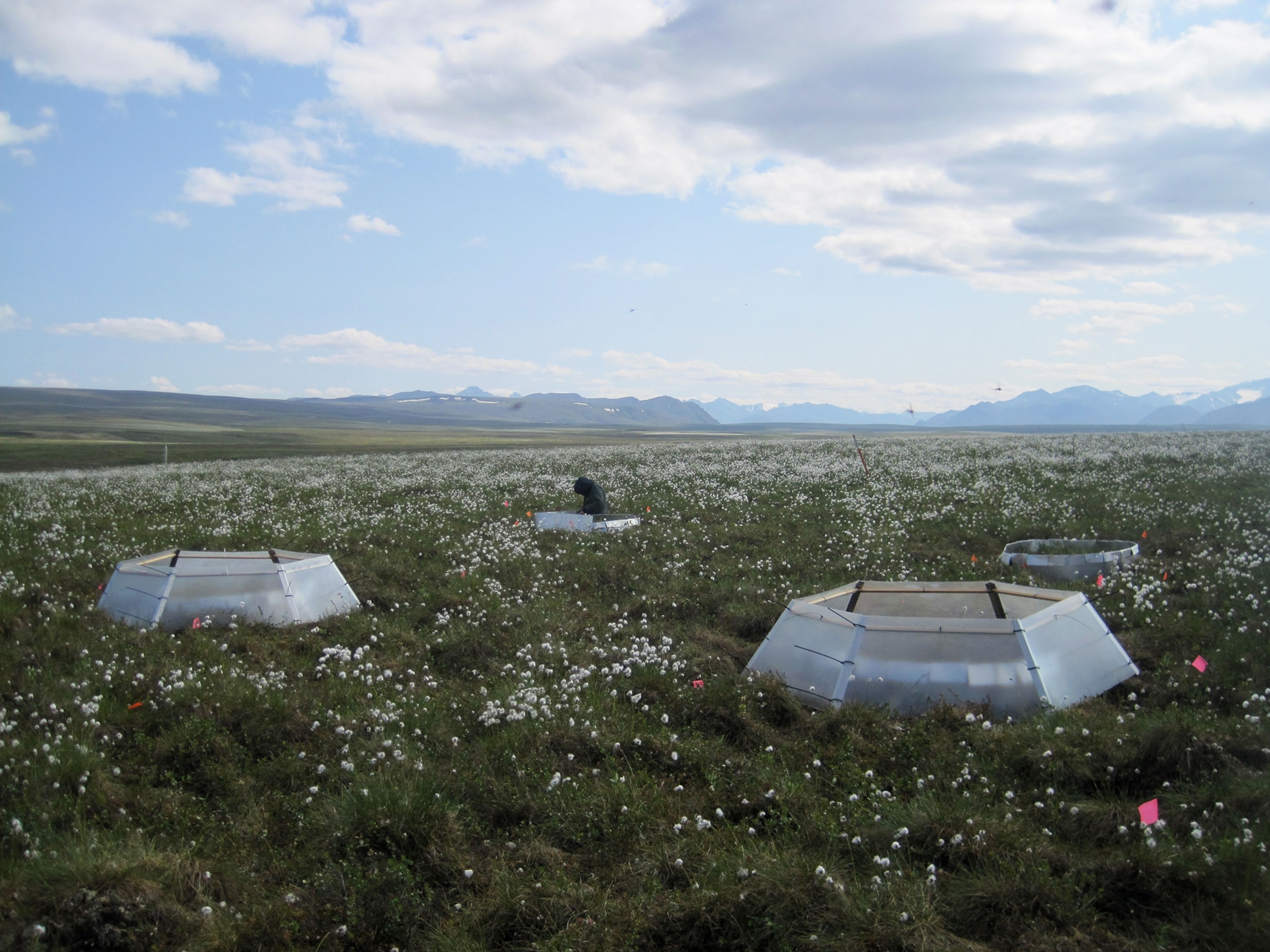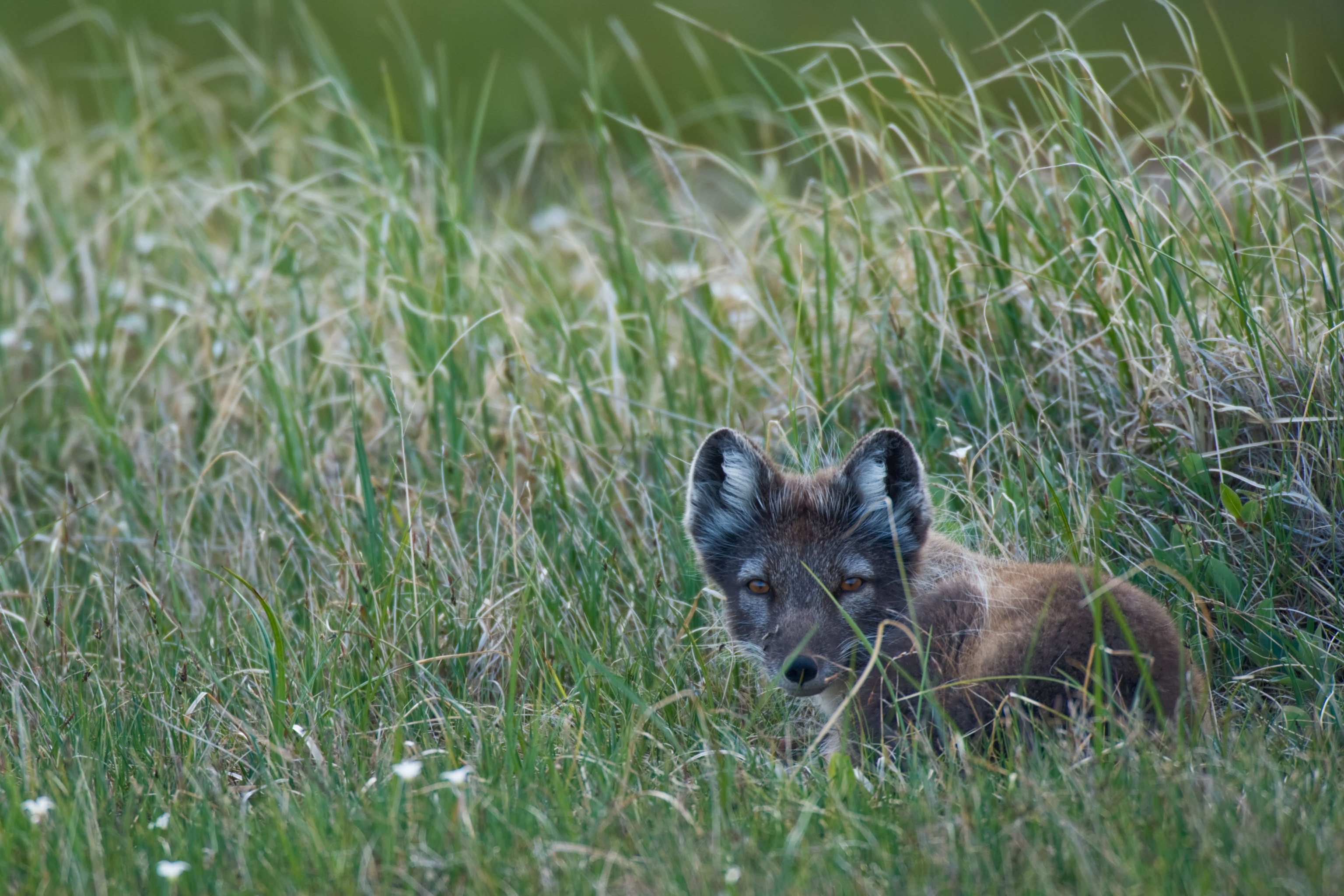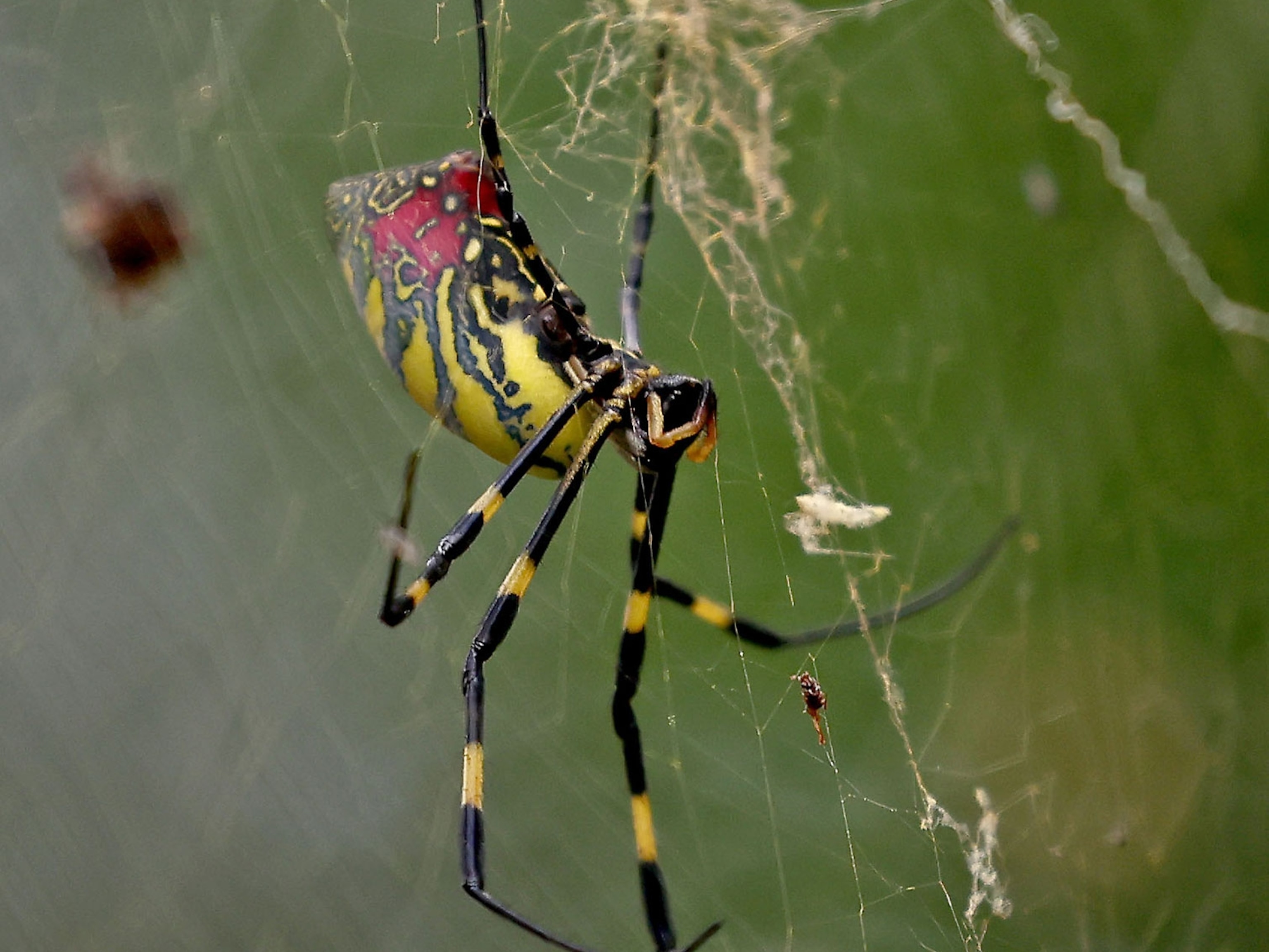The Arctic tundra is teeming with predators, just not the ones you might expect: By biomass, arctic wolf spiders outweigh arctic wolves by at least 80-to-1.
The eye-popping calculation, published today in PNAS by National Geographic explorer Amanda Koltz, could shape our understanding of how the Arctic will respond to future climate change.
Her study reveals that at increased temperatures and population densities, arctic wolf spiders change their eating habits, starting an ecosystem-wide cascade that could change how quickly melting permafrost decomposes.
Arctic Arachnids
Human activity, especially the release of heat-trapping greenhouse gases, is warming the planet—and the Arctic is getting hotter twice as fast as the rest of Earth.
The Arctic's heat-up is particularly worrisome because as the region warms, permafrost—a frozen layer of soil and dead things—begins to melt, allowing fungi and bacteria to decompose it. Decomposition releases greenhouse gases like carbon dioxide and methane that further accelerate climate change.
Koltz, an Arctic ecologist at Washington University in St. Louis, studies not only how a warming climate affects predator-prey relations, but also how changes in those relationships influence the broader ecosystem. “I really felt like the animal element was potentially missing from this story,” she says.
Scientists have known for almost a decade that climate change would impact spider populations. A 2009 study showed that a warmer Arctic with earlier springs and longer summers could make wolf spiders both larger and—because larger spiders can produce more offspring—more abundant. (Read expert advice on what to do if you find a spider in your home.)
Wolf spiders will eat most insects and spiders smaller than themselves, and they also dabble in cannibalism; if their populations get too dense, they’ll eat each other. But one of their favorite foods is a fungus-eating arthropod called the springtail. If wolf spiders eat more or fewer springtails, how will the amount of Arctic fungus—and the resulting rate of fungal decomposition—vary?
With all this in mind, Koltz set up some five-foot-wide experimental ecosystems in the Alaskan Arctic. For two summers, she and her team monitored how temperature and the number of spiders changed the mix of organisms within these hemmed-off patches of permafrost.
Small But Mighty
In higher temperatures, decomposition occurs more quickly and wolf spiders are more active, so Koltz expected that when her mini-ecosystems got warmer, their wolf spiders would drastically reduce the springtail population. But Koltz found just the opposite.
In plots with more spiders, the spiders actually ate fewer springtails. These larger springtail populations then ate more fungus, which lowered the rate of decomposition. Among the hotter plots, the one with more spiders decomposed less than plots with almost no spiders. In a way, the spiders are helping to fight climate change in the arctic tundra. (Also see: How Scientists Taught a Spider to Jump on Demand.)
The unexpected find has drawn praise from experts. “The novelty of Dr. Koltz’s paper is that it shows not only is [climate change] having direct impacts on these important ground dwelling animals but also on the complex ecological interactions between species on the tundra,” Joseph Bowden, an entomologist with the Canadian Forest Service who was not involved with Koltz’s research, says by email.
But it remains unclear why high-density spiders lose their appetite for springtails. It might be that with higher populations, the spiders shifted from eating springtails to competing with—and eating—each other. Or it might be that the higher temperature led them to find a different food source. Koltz says that the next step in this line of research would be to identify exactly how the spiders' diets changed.
“We tend to forget about the tiny animals because they’re not as visible as the bigger mammals,” says Koltz. “But I think it’s really neat to think about how these small animals have important impacts on the ecosystem as well.”
















